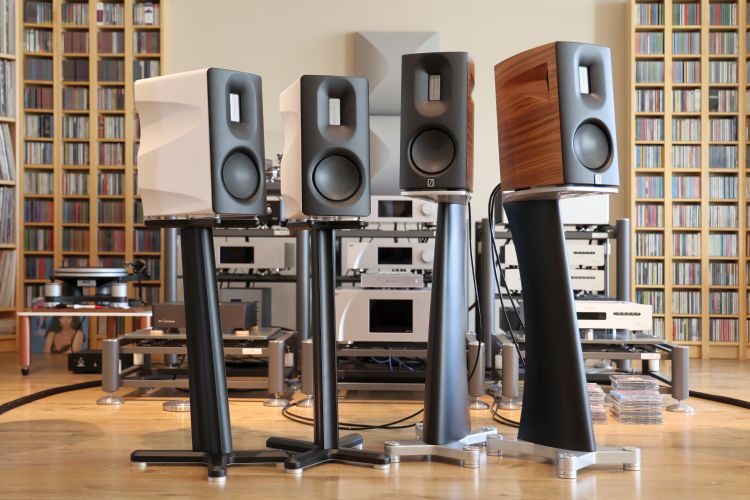
Listening – Z1
The Z1s review samples are finished in a beautiful satin white finish. Absolutely nothing about it suggests “wood” or “paint”, rather, it looks a lot like a Krion or Corian composite. Speaking of which, the speakers are also suitably heavy!
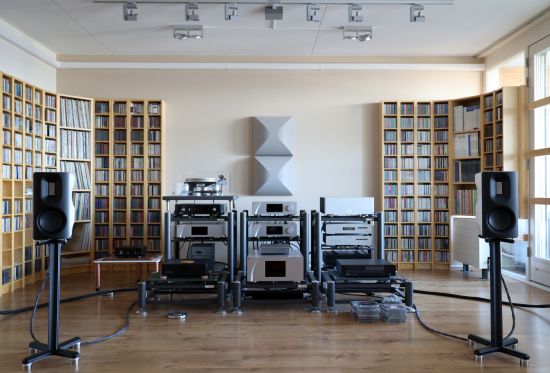
Despite (or thanks to?) the wobbly stand, the Z1s produce an incredibly energetic, direct, and expressive sound. The level of tightness, focus, and detail is very high and certainly meets my expectations at the price. Point source fans will also want to pay attention as these speakers focus incredibly precisely. The imaging is rock-solid and well-earthed and the sound is well-concentrated while the speakers have no problem projecting well outside of their enclosures when the recording dictates this.
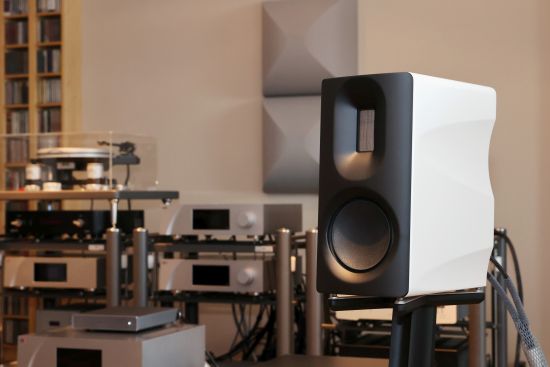
These speakers are FAST, too! Despite the bass-reflex port, they start and stop on a dime, so to say, and I really like this level of accuracy. Although fast and impulsive, the Z1’s bass does not lack body at all and the speakers are happy pounding out rock, bass-heavy dance music, or R&B as they are producing classical or jazz.
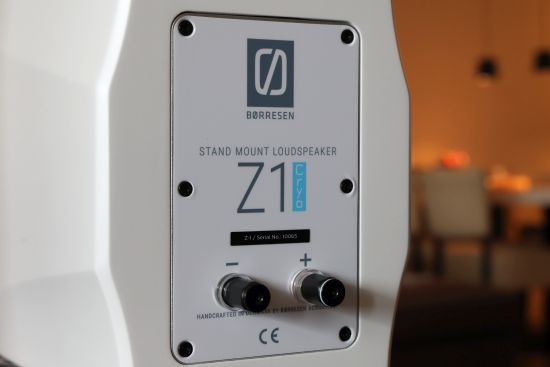
The Z-terminals are silver-plated brass
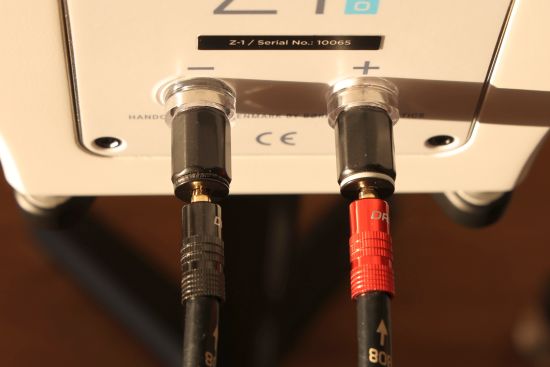
Ribbon tweeters have a habit of sounding airy and open but sometimes they lack body and lower midrange fulness, and it can be hard to mate them to a dynamic woofer. Not in this case, though, as the two operate in perfect unison. Further, the Z1’s lower midrange is actually quite rich and fulsome with a “wood-like” tonality, and certainly not lean. The larger a driver, the more it starts to beam, meaning that it becomes more critical to sit in precisely the correct position. Long ribbon drivers (such as those used by Magnepan, Apogee, Diptyque, Analysis, and other dipole speaker brands) are especially infamous for this.
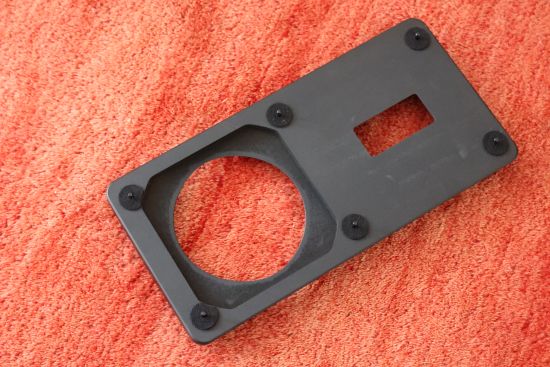
The ribbons in the Z1 and 01, however, are aided by a waveguide (imaged above) that greatly increases the vertical spread of the high frequencies. I actually tested this by removing the waveguide and can confirm that it really works as advertised. When standing up in front of the speaker, I can still hear a very good amount of treble but with the waveguide removed, the output all but drops off above the midrange. Horizontally, there’s no beaming, the dispersion easily covering an entire 4-seat sofa.
Being a technical tour-de-force, I’m sure the speakers will have a very flat frequency response if measured, but as I experience them in relation to the top-of-the-line 01s, as well as my Magico S1 MkIIs, the Z1s do have a tendency to sound forward in the lower midrange. What I hear is a cupped-hand kind of prominence that I feel deviates from perfect neutrality. When standing up or at extreme angles to the side, for instance in the adjacent kitchen area, the upper treble rolls off, and the aforementioned effect increases. Interestingly, I found this effect is somewhat reduced with the waveguides removed, but then so are their benefits. But as noted, the off-axis performance is absolutely fine across the entire listening area.
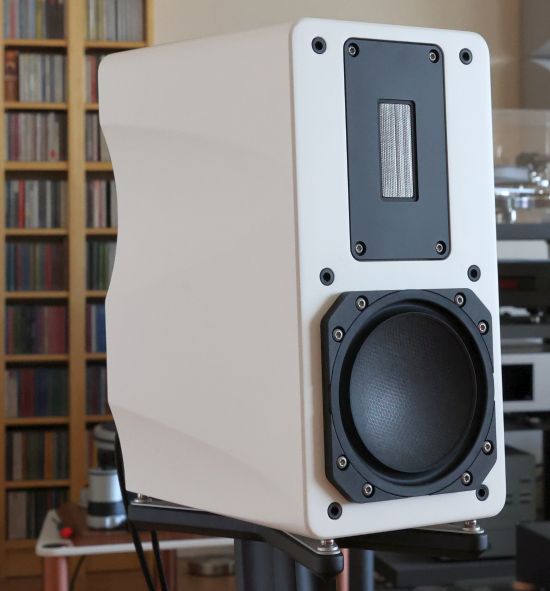
“Naked” Z1 sans Waveguide. Do note that the speakers are designed with the waveguides in mind and they should normally not be removed.
Matters of taste aside, the Z1s have a rich and colorful, organic quality in the midrange which makes them stand out from other speakers that have the Z1’s analytical quality. They do not mask anything, yet, they do not sound lean, nor devoid of emotion, let alone clinical. In fact, I’d say the Z1s are gently relaxed, and on the full side of neutral.
The tweeter is open and airy, and it is highly revealing of the source material. Play something rough or edgy and the sound will simply conform to the input signal, just as it should in my opinion. In and of itself, the Z1’s treble has a gentle quality and could even be considered smooth. It is explicit and highly resolving but not hard or “in your face”. Nevertheless, there is no restraint in terms of dynamics, and there is plenty of bite and attack if needed. Oh, and the Z1 can play loud, too! Of course, it is not a PA speaker and the woofer ultimately has its limits, but it is very dynamic and shows no signs of stress even when pushed beyond the levels that I find comfortable. If anything, because they are so stress-free, the speakers encourage playing a little louder.
Then, we arrive at arguably the speaker’s most amazing feature: the quality of the bass! First, it goes as deep as the Magico S1 MkII floorstanders. This in itself is already an accomplishment because the Z1 monitors are not even half the S1’s size. But not only do the Z1s go deep, but their bass also has immense power, again roughly comparable to that of the S1. The biggest surprise is that the Z1’s bass is even tighter, snappier, and more precise.
Overall, the Z1s sound very different from the Magicos and their voicing is a matter of taste, but technically speaking, I would say they perform roughly on the same level, which is quite amazing.
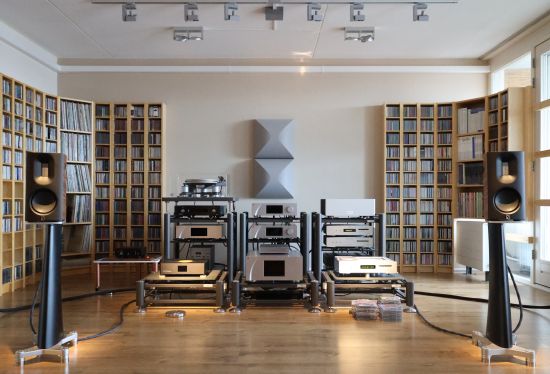
Listening – 01
Going into this review, I feared that the 01 might not live up to its price tag. Because let’s be honest, they look stunning in their Walnut finish but 43.000 euros excluding stands is stratospheric for a monitor speaker. But mere moments after hearing the 01s after the Z1s, that fear vanished. Yup, the 01s are massively better.
The specs do not show it, but going by the need to raise the volume to achieve the same measured loudness, the 01s appear to be about 3 dB lower in sensitivity. This might mean that the crossover is different and probably more elaborate, and going by my listening impressions, that certainly seems to be the case. But I have no doubt that the refinements induced by the Silver Supreme Edition also make their mark.
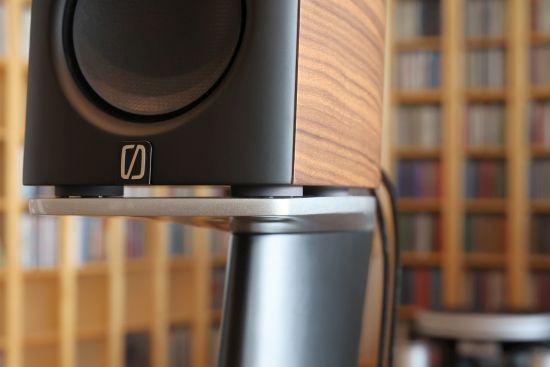
These speakers truly are fantastically precise, quick, crisp, and highly resolving, and they are considerably more neutral, linear, and transparent than the Z1s. Like those speakers, the 01s are superbly focused yet capable of wide and deep imaging, and while they are very revealing, they remain relaxed and are not edgy or bright, nor in any way overbearing. Rather, they are supremely delicate, airy, and gentle.
The Z1 was already performing more or less on the same technical level as the Magico S1, certainly in terms of resolution, precision, and refinement, as well as the bass, but the 01 takes the performance in these areas even further, way beyond what the S1 can do. In a cross-comparison when going back to the Magicos, there is no denying the lower levels of resolution, tightness, precision, and delicacy.
Uniquely, in spite of having benchmark-setting levels of resolution and precision, the 01s remain harmonically rich and are even subtly smooth. More specifically, while the 01s have the same full-blooded and gently relaxed signature of the Z1s, they do not have the “cupped-hands” effect and only exhibit a hint of that model’s “wood-like” tonality. Compared to the Magicos, the 01s midrange is not quite as tonally neutral, but another way of putting this would be that the 01s have a more saturated tonality with more of an organic touch. Whereas the Z1s are a little forward in the midrange compared to the S1 MkIIs, the 01’s sound ever so slightly laidback and polite in the midrange. They are simply never shouty, much in a gentleman-like manner. While the Z1’s midrange prominence and higher sensitivity make them sound more upfront and lively at first, I most definitely prefer the 01’s more sophisticated approach.
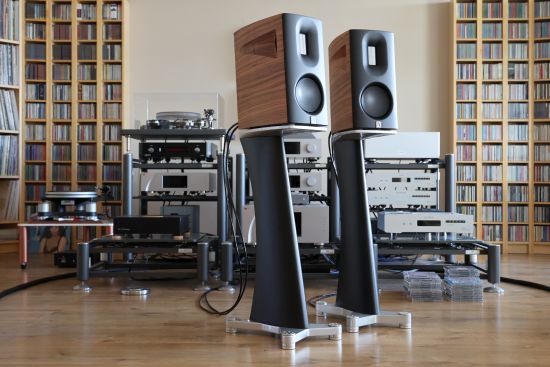
Another marked difference between the Z1 and 01 is in the bass. While the 01 reaches just as deeply as the Z1, the higher neutrality extends down into the bass where 01 is even cleaner and even better behaved. The Z1 can start and stop on a dime, and so can the 01, but the latter sounds even more accurate and more sophisticated while doing so. The Z1’s bass is very fast and precise but after hearing the 01, somehow, the Z1 comes across as a little heavy-handed. Some people may like that kind of behavior or are perhaps used to this. While this does help to get a party started there’s no denying that the 01 takes the audiophile performance to an even higher level. Besides the presumed modifications in the crossovers and the silver ring in the woofer magnet, it seems obvious that the 01’s curvy speaker enclosures are also debit to this. But surely, the special reflex port design helps with this.
One of the reasons why I chose Magicos is that they have a sealed cabinet which means that they interact less with room boundaries and are less prone to excite room modes. In spite of their ported designs, however, both the 01 and Z1 behave absolutely exemplary in the bass. I encountered absolutely zero negative influence from that port. No chuffing, no boom, just pure, clean bass throughout its entire range. Quite an achievement.
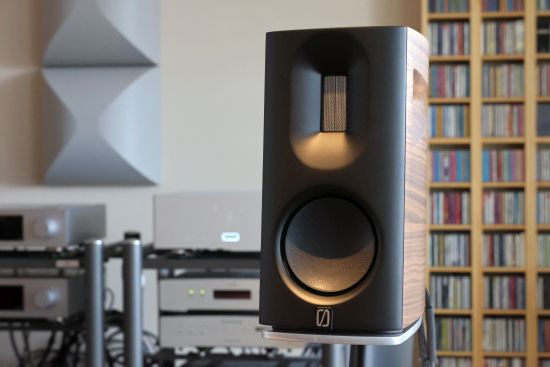
When compared to more typical booming and zooming bass-reflex designs, some may feel the 01’s bass is a little dry. While I personally don’t feel that way, there are ways to mitigate this. For instance, the choice of speaker cable. I’ll go deeper into this further down.
In my room, the Magicos S1 MkIIs really do not reach any deeper than the 01s but they do sound fuller and meatier. This is not a measure of quality but a matter of character and it may be a plus or minus depending on your view. In a way, the Z1’s bass is actually more in line with how I perceive the Magico Q range: precise, relatively slightly lean, but deep and super articulate. Not that anyone would confuse a Magico Q1 with a Børresen 01. As I mentioned, there is no clinical aspect here, nor are the Børresens over-controlled. In fact, they sound juicy and manage to sound both precise and liquid at the same time.
Like the Z1s, the 01s sound most ideal in the sweet spot or at least in the lateral area of the listening position. But compared to the Z1s, they have a more controlled or even-handed dispersion, and unlike the Z1s, the 01s sound good anywhere in the apartment. Even around the corner in the kitchen.
After listening to the Z1, I still preferred the Magicos, but after hearing the 01s for a prolonged period, I’m not so sure anymore! Now, the Magicos sound comparatively sober and significantly less spacious.
Next: Darkz C2T and S2T
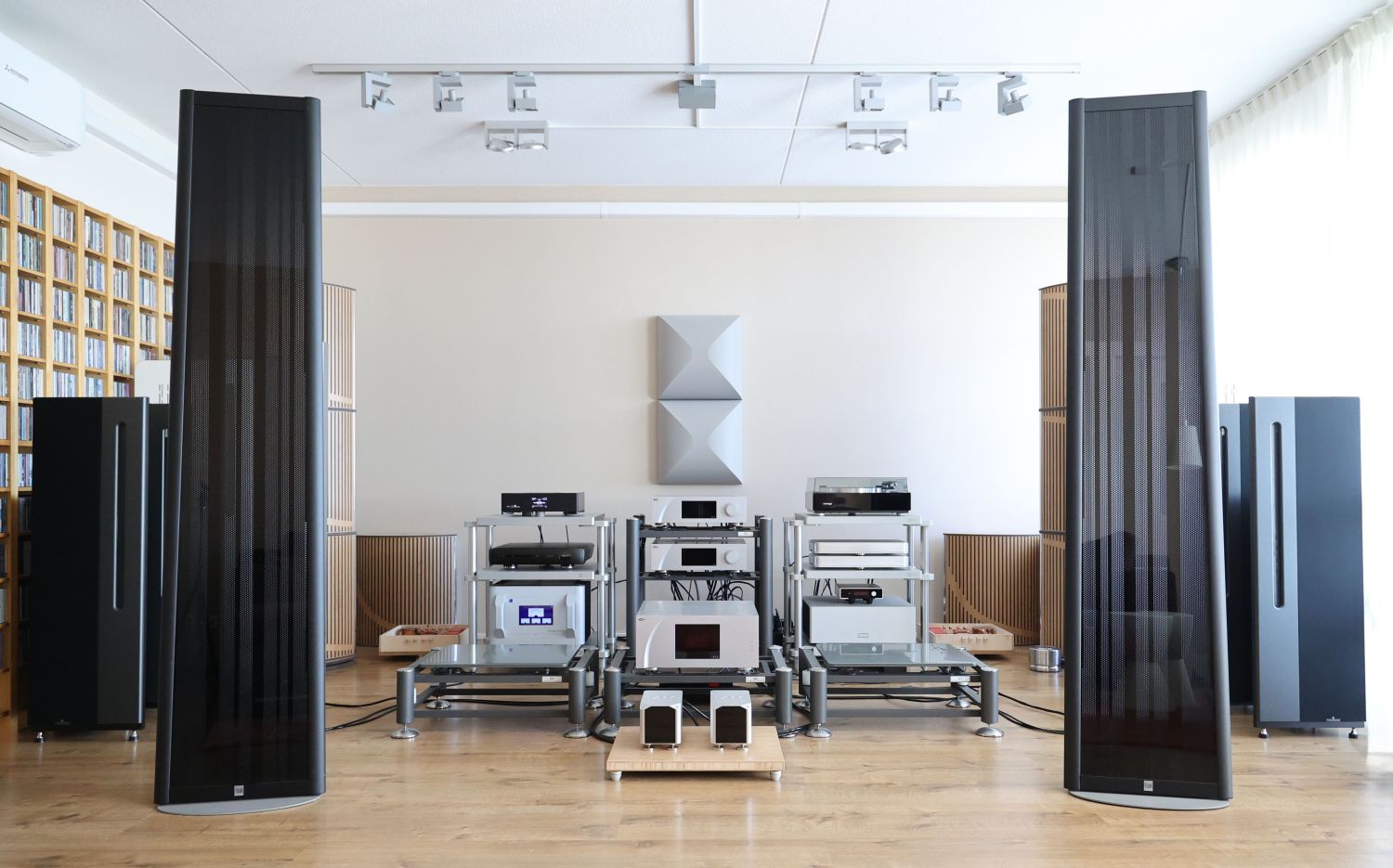
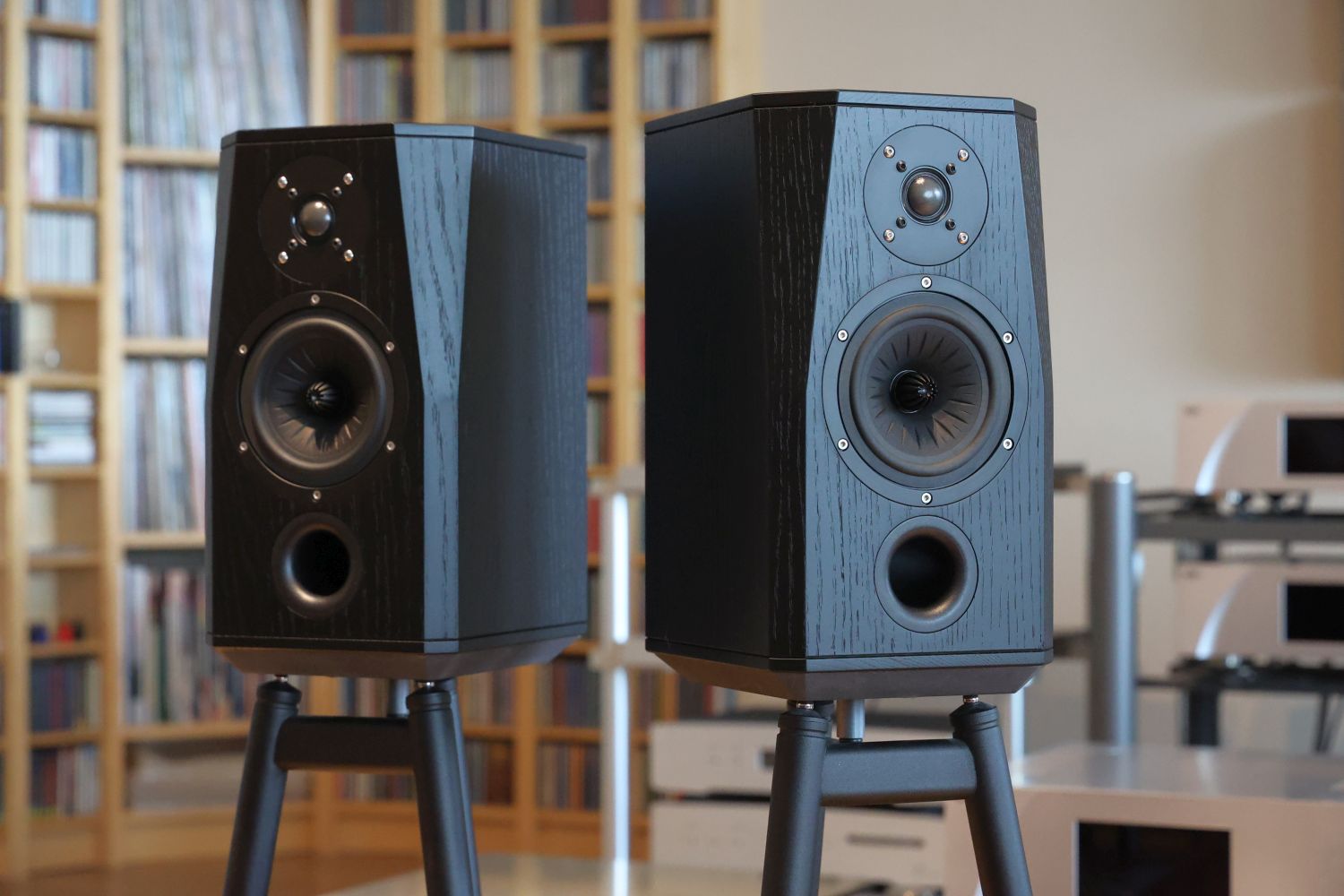
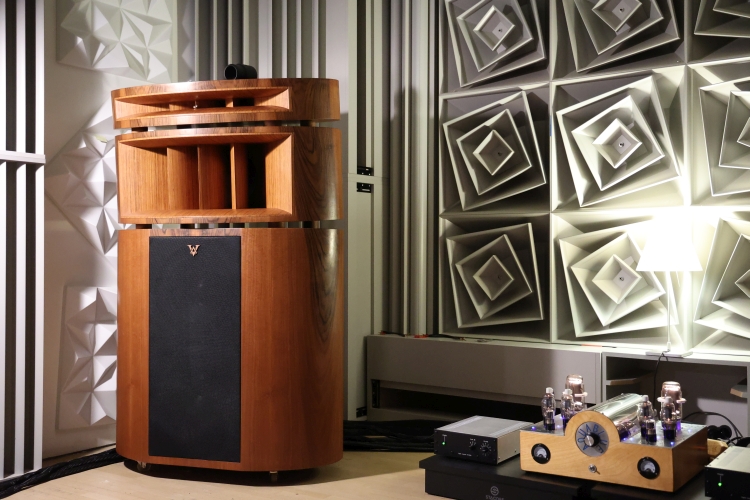
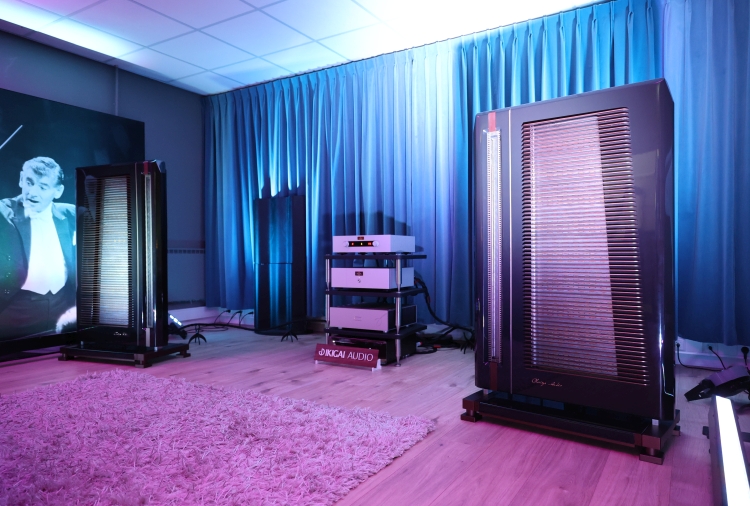
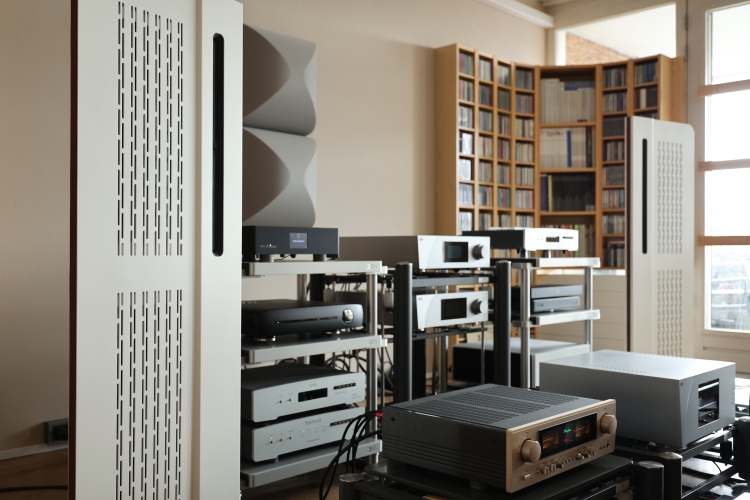
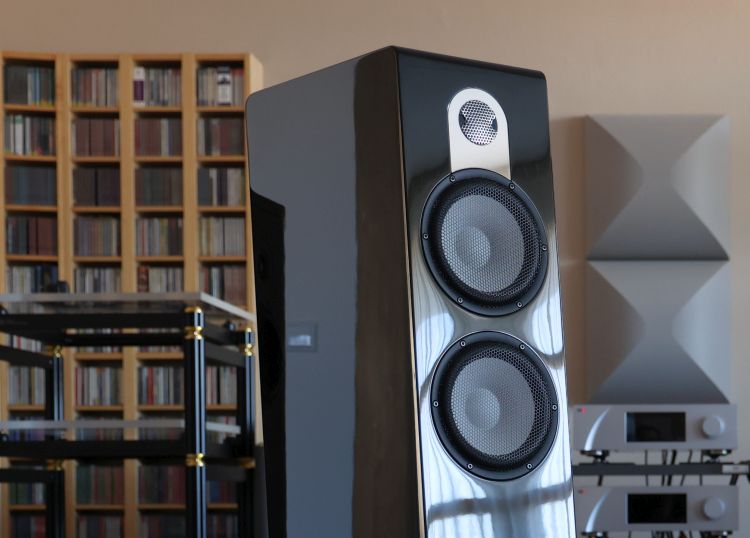
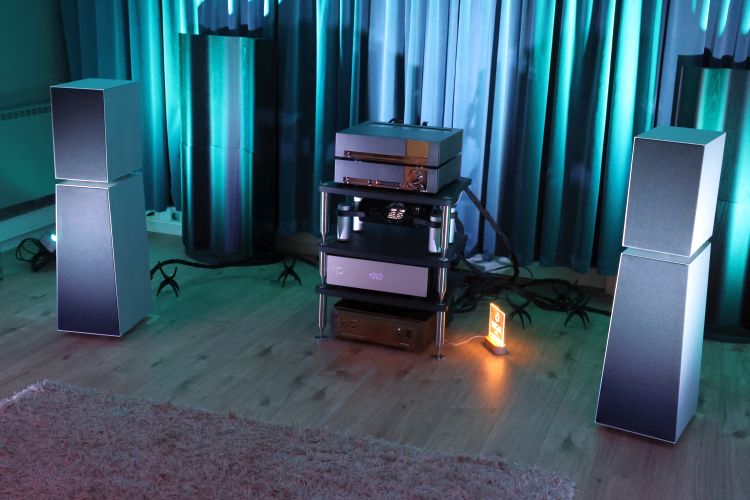
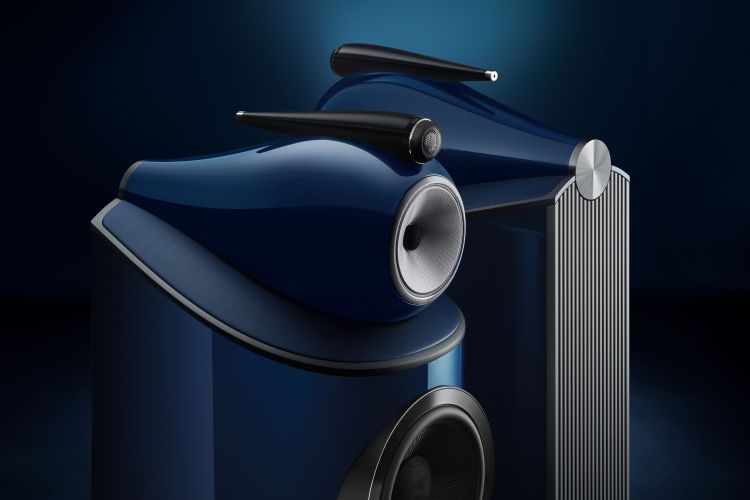
Great review, as always. Thanks. I didn’t look up the specs but did you try the Z1 with a tube amp? It would probably not with a 20 wpc tube amp, would it?
Regards, Jan
Hi Jan, I no longer own a tube amp and haven’t tried, but I would imagine that the 60-Watt Ayon Spirit III (or the V) would have had no issues with the Z1 whatsoever. Whether a 20-Watt tube amp would also cut it, I cannot say. It will depend on how it was designed and on how loud you want to play. I never got the impression that the Z1s are particularly hard to drive, but at 86 dB, they are not very sensitive and they will require some potency if you want to play louder. My guess is that if you’re going to extract the best of them in terms of tightness, agility, and transient behavior, it may prove hard (or costly) to find a well-matching tube amp. Finding a well-matching transistor amp will likely be much easier.
What “review?” This is not a review.
Hello CP,
Can you indicate how these Børresen loudspeakers compare to the Franco Serblin Assence, previously reviewed by you? And yes, we also had to bend our knees for balls…..
Regards,
JB
I’ve only reviewed the Franco Serblin Accordo monitors, not the Essense, and comparisons from memory are not hugely reliable. That said, I have heard all their models and think I have a good understanding of their qualities. The main differences between the Børresens and the Accordo Essence are resolution and transparency, where the Børresen simply has the upper hand.
Hello CP,
Can you indicate how these Børresen loudspeakers compare to the Franco Serblin Accordo, previously reviewed by you? And yes, we also had to bend our knees for the balls…..
Regards
Jan
Not looking at the price, would you change the Driade flow speaker cable for the Ansuz C2 speakz ?
This will depend on which virtues one finds most important. Does one prefer the tightest and most precise bass and best overall neutrality or the widest soundstaging, deepest tonal saturation, and most magical delivery? It’s very much a personal matter. In my system, I use the Mad Scientist Black Magic speaker cable which matches even better with the Magicos and the rest of the system. But they have spade connectors and besides are not flexible or long enough to be used with the Børresen monitors. I place a lot of emphasis on bass precision even to the point of accepting less weight in favor of transient speed but I know this is not the most common viewpoint. Many listeners prefer a slightly more relaxed bass and within the context of a Børresen monitor speaker system, I would suggest taking the Ansuz route, among others because the C1 cable’s fuller bass augments the speakers’ bass heft and feeling of listening to a fuller-range speaker.
Hi Christiaan, have to say I also prefer quality bass above quantity, at the moment I am using the older Ansuz POM speakercables, did try also C2 and D2, for me the D2 is where the real magic begins in the Ansuz line, but I will never get myself to buy 18K speaker cables. I might give the driade flow 808 a try to see if it is more my taste.
Have a good xmas
Hi Christiaan,
I am looking for speaker cables for Audiovector R1 Arrete speakers. Is the Ansuz P2 speakz a good choice in this price range, or is the Purist audio design Poseidon better?
With best regards,
Igor
Hi Igor, I’ve not heard any Purist Audio cables so can’t tel you how they compare.
Hi ;
OK , but my main question is I am looking for speaker cables for Audiovector R1 Arrete speakers. Is the Ansuz P2 speakz a good choice ?
Best regards , Igor
Whether or not the P2 Speakz works well for you depends on many factors, not least of which is your personal taste. Also, I have not heard the Audiovector speakers. All I can say is that the P2 may be for you if you feel that the Audiovector in your current setup will benefit from a sweeter, lusher, more relaxed, and more liquid sound.
Wow they are about the same price as Marten Mingus Quintet
Christiaan, as you are known to the improvements Ansuz Darkz can bring. I was wondering if you have ever tested Darkz underneath your Magico S1 mkII, and your opinion about it. Current photos of your setup, shows you are still using the spikes. Do they perform better?
I bet Darkz could sound very nice as speaker footers under the Magico S1s instead of the standard spikes, but they are not compatible in terms of thread, and I don’t dare just placing them underneath the speakers without being fixed. I did buy StillPoints with the intention to use them under the Magicos but that idea has lapsed as I am happy with the speakers just as they are and I use the StillPoints elsewhere.